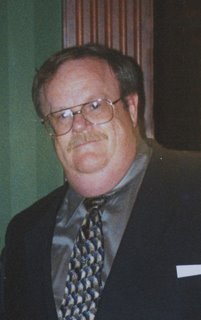Several of Squire John Gwinn's children eventually settled in southern Iowa, including Cynthia Gwinn, my ancester and, along with husband Samuel, was the first Gwinns to settle Wayne County.
The following is an excerp from The Gwinns of Round Bottom, By Leona Gwinn Brown. The entire document is at www.gwinnreunion.org/book/ . It's good reading.
Quote:
John Gwinn, followed in his father’s footsteps and acquired many acres of land in what would be Summers and Fayette Counties. One of these was "one certain tract of land in the county of Fayette containing 230 acres, lying on New River and known as the round bottom tract," which he bought from Isaac and Elizabeth Sanner in April of 1855. This was the tract of land to which his son, Laban, would later bring his bride, Mary Jane Burdette.
When John Gwinn was twenty-four years old, in 1812, he married Sarah George, daughter of Thomas and Catherine George. Twelve years later he bought his first tract of land, in what was then wilderness, near the present town of Meadow Bridge. The land was well-timbered. He cleared a large section of it and used it to raise grain, cattle, sheep, and hogs.
Fayette County was formed by an act of the General Assembly of the state of Virginia in 1831. In the new county government, John Gwinn was commissioned a justice of the peace. In 1844, he received a commission from the Governor of Virginia to execute the office of Sheriff. He was the seventh Sheriff of Fayette County. He served in this office until 1846, receiving a salary of eighty-five dollars a year.
Frederick Long writes:
At the June term of the County Court, 1840, John Gwinn was granted a license to keep a "house of private entertainment", a tax of $2.00 being imposed. This was a market place where all kinds of foods were kept and exchanged. The early hunters sold their venison, bear meat, beef, pork, hides, pelts and wild ginseng. The farmers traded their products for coffee, lead, powder, caps, tobacco, cotton cloth, etc. At that time it was all a barter business, with little money handled. It was also a stopping place for the traveling public, an Inn or hotel. Every month or so John and one of his sons would load a wagon with the surplus of grains or hides and make the two-day journey to Lewisburg where he would sell them. In this manner John was able to save a large amount of money.
John Gwinn and his wife are buried in the Wickline cemetery near Meadow Bridge next to their daughter, Achsah, who was killed when she was eight years old in a freak accident when a tree limb fell on her. John’s tombstone, which was not erected until the 1930’s, gives the date of his death as 1870, but this is incorrect. An old bill now in the possession of Nelson Gwinn is headed: "February 1871 John Gwinn moved to Lavin (sic) Gwinn on Newriver." The bill is for materials and labor for building a cabin, and totals $141.95, with $7.95 deducted (perhaps a down payment), leaving a balance of $134.00. The chimney of this cabin was still standing when I was a child in the 1930’s, and I remember its being pointed out to me as the chimney of "Pappy John’s" cabin.
Unquote
Winter is here, I hope to write more than I did this summer. - Ray
Friday, October 26, 2007
Subscribe to:
Post Comments (Atom)



1 comment:
Good post.
Post a Comment